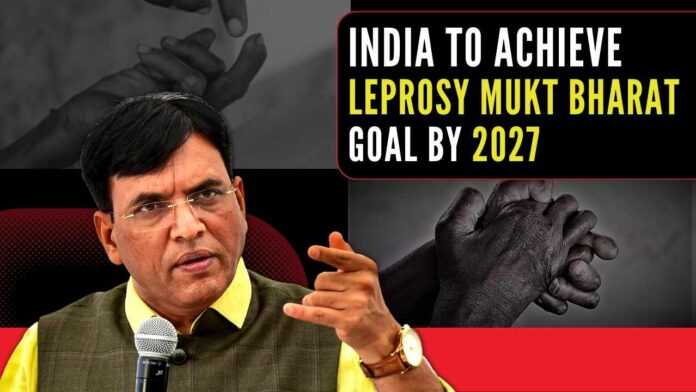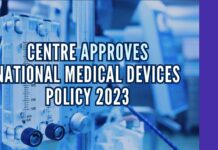
Centre releases roadmap & strategy for eliminating leprosy by 2027
In a virtual address at an event to observe National Anti-Leprosy Day, Union Health Minister Mansukh Mandaviya said India is making progress as new leprosy cases are declining year after year.
“With the whole of government, the whole of society support, synergy, and cooperation, we can achieve the target of Leprosy Mukt Bharat by 2027, three years ahead of the SDG,” Mandaviya said.
The theme of this year was ‘Let us fight Leprosy and make Leprosy history‘.
Reiterating Mahatma Gandhi’s enduring concern for people affected with leprosy, he said that the concern and commitment to treating leprosy have its origin in our history.
“His vision was not only to treat them but also to mainstream them in our society. Our efforts to eliminate leprosy from this country under National Leprosy Eradication Program is a great tribute to his vision. We are successful in achieving a prevalence rate of 1 case per 10,000 population at the national level in 2005. The need of the hour is consistent efforts to eliminate leprosy. It is a curable disease, however, if it is not detected and treated at the early stage, it can cause permanent disabilities and deformities among the affected person, leading to discrimination of such persons and their family members in the community,” he said.
Accentuating on the efforts of the National Leprosy Eradication Programme, Union Minister of State for Health, Dr. Bharati Pravin Pawar, said: “Our Leprosy Program strives to detect and treat cases as early as possible, gives treatment free of cost to prevent the development of disabilities and deformities, and medical rehabilitation of those with existing deformities. The Welfare allowance has been raised from Rs.8,000 to Rs.12,000 for patients for their reconstructive surgery.”
Highlighting the achievements of the program, she informed that the prevalence rate of leprosy has come down from 0.69 per 10,000 population in 2014-15 to 0.45 in 2021-22. Further, the annual new case detection rate per 100,000 population has come down from 9.73 in 2014-15 to 5.52 in 2021-22.
“The program also works towards spreading awareness and reducing the stigma attached to the disease. Surveillance was also strengthened by introducing ASHA-based Surveillance for Leprosy Suspects (ABSULS) where grassroots-level workers constantly engaged in examining and reporting suspects. The special emphasis under the Focused Leprosy Campaign (FLC) was given to areas that were difficult to access or had child cases and cases with disabilities. Since 2015, with the constant efforts under NLEP, we have been able to prevent many cases of disability due to leprosy,” she added.
[With Inputs from IANS]
PGurus is now on Telegram. Click here to join our channel and stay updated with all the latest news and views
For all the latest updates, download PGurus App.
- Like Amethi, Congress’ ‘shehzada’ will lose Wayanad seat too: PM Modi’s dig at Rahul Gandhi - April 20, 2024
- Karnataka HM apologizes to Neha’s parents while the killer Fayaz’s mother expresses her desire to ‘punish her son’ - April 20, 2024
- US: Indian student’s death possibly linked to Blue Whale suicide game - April 20, 2024











Raghu Ram Rajan does not agree !!
Make RR Rajan economic adviser, he will agree with everything govt says.